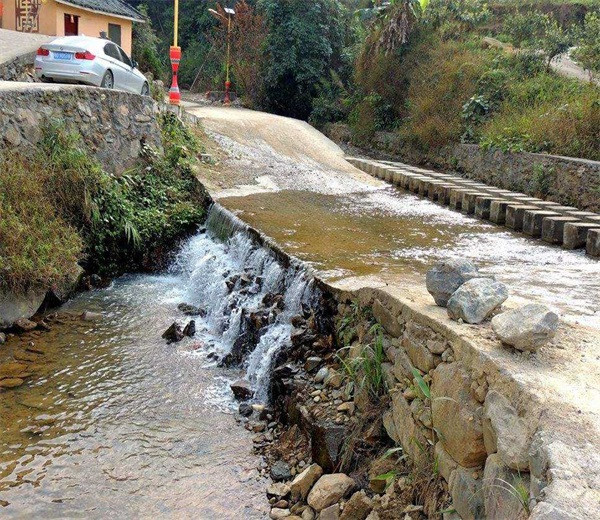
Water is the material basis for the survival of Earth biology. Water resources are the primary conditions for maintaining the sustainable development of the earth’s ecological environment. Therefore, protecting water resources is the greatest and most sacred responsibility of human beings. Nowadays, more and more water sources are contaminated, and there are fewer and fewer freshwater. Many companies have begun to use water testing. Today, I will introduce it to you in detail.
1. Harmony people’s physical and mental health: After water pollution, according to drinking water or food network, pollutants enter the body, making people acute or poisoning. Arsenic, chromium, ammonium, benzene (A) , etc., can also cause cancer syndrome. Water that is contaminated with the environmental pollution of virus infections or other pathogenic bacteria can cause a variety of infectious diseases and parasitic infections.
2. Damage to industrial manufacturing: After the water body environment is polluted, the required funds must be invested in industrial sewage treatment to solve the cost, resulting in luxury and waste of resources, power and energy. Manufacturing stops.
3. Rich nutritional damage: Under normal circumstances, oxygen is soluble in water. Oxygen oxygen is not only the standard for survival of water biological microorganisms, but also oxygen registration to participate in the various air oxidation-reactions in the water and promote the transformation of pollutants. It is the key to pure natural water quality.
With the development trend of social development, the problem of environmental pollution is becoming more and more prominent. And since the implementation of the ISO14000 series of product specifications, countries around the world have immediately scratched the trend of inspection and verification, and the awareness of protecting water resources has become increasingly improved.
1. Making wastewater detection: COD, BOD, ammonia, total phosphorus, total nitrogen, fluoride, sulfides, heavy ions, anion surface active agents, etc.
Industrial Production Wastewater (English: Industral Wastewater) contains manufacturing wastewater and production manufacturing wastewater, which refers to the wastewater and wastewater caused by the entire process of industrial production. In it Pollutants caused in the production process. Water excreted in the production process.
According to the physical properties of key pollutants in the industrial production wastewater, it is divided into: inorganic wastewater dominated by inorganic pollutants, organic chemical wastewater dominated by organic pollutants, mixed wastewater, heavy metal containing organic compounds and inorganic compounds, and inorganic compounds Waste water exceeding the standard water, wastewater containing radioactive elements, and cooling circulating water contaminated by heat environment. For example, the wastewater of the electroplating process wastewater and mineral production process is inorganic wastewater, and the wastewater of the food or oil processing process is organic chemical wastewater.
According to the manufacturing enterprises’ goods and production and processing targets, they can be divided into papermaking industrial wastewater, textile wastewater, tone wastewater, fertilizer wastewater, metallurgical industrial wastewater, and over -oil refining wastewater.
The key ingredients of pollutants in wastewater can be divided into pH wastewater, alkaline wastewater, phenol -containing wastewater, chromium -containing wastewater, organic phosphorus wastewater, and radioactive substance wastewater.
Only wastewater within the standard range after the wastewater treatment and detection can be discharged to the specified place. It is forbidden to discharge exceeding the standard and prohibit illegal emissions.
Second, the detection of clothing, food, residential and transportation wastewater: pH value, CODCR, NH3-N, TP, SS, crude oil, animal and plant oil, etc.
Third, surface water detection: pH value, NH3-N, TP, SS, biochemical oxygen demand, etc.
The natural environment of the base surface water waters and maintenance of the overall goal is classified as five categories according to the functional height. The five types of waters of the surface water areas are divided into five categories of the new project of the quality of the surface of the surface water. Types each implement a relative type of indicator value. High indicator values with high functional types are stricken than indicator values with low functional types of waters. In the same waters, there are multiple types of application functions, and the indicator values that match the most functional types are implemented. Maintaining waters’ function and functional types of function is the same meaning.
Fourth, surface water detection: pure water and electricity guidance, heavy metal exceeding the standard positive ion, etc.
New project:
Aniline, indoor formaldehyde, saturation, suspended solids, pH value, five day biochemical oxygen demand (BOD5), permanganate index, CODcr, total phosphorus, polyphosphate, chloride, total arsenic, hexavalent chromium, total chromium, hydrogen cyanide, volatile phenol, animal and vegetable oil, cationic surfactant, iron, manganese, nickel, volatile phenol, temperature, dissolved oxygen, total nitrogen, copper, cadmium, zinc, lead, etc.
The importance of water quality detection:
Safe water safety: Water quality monitoring can timely discover pollutants and harmful substances appearing in water sources and pipe networks, prevent water quality from being polluted and ensuring the lives and health of citizens.
Monitoring environmental pollution: The water quality monitoring stations in various places are tested on different types of substances in different water -type water bodies such as rivers and lakes, and reported water pollution conditions caused by water source, industrial, and life in the water source land agriculture, industry, and life in a timely manner.
Forecast water source changes: Through water quality monitoring, you can understand the current hygiene quality, ecological environment and material pollution status of water bodies, and then predict the trend of water sources and guide the development and utilization of water resources.
Evaluation and governance effect: Regular water quality monitoring can timely understand the effects of governance pollution and its effects, and provide environmental management personnel to adjust and improve the governance plan and measures in a timely manner to improve the effect of governance.
In short, water quality monitoring, as the basis for the development and utilization of water resources, plays an important guarantee effect on ecological environmental protection, resource optimization and utilization, and quality of citizen life.
Post time: Sep-01-2023




